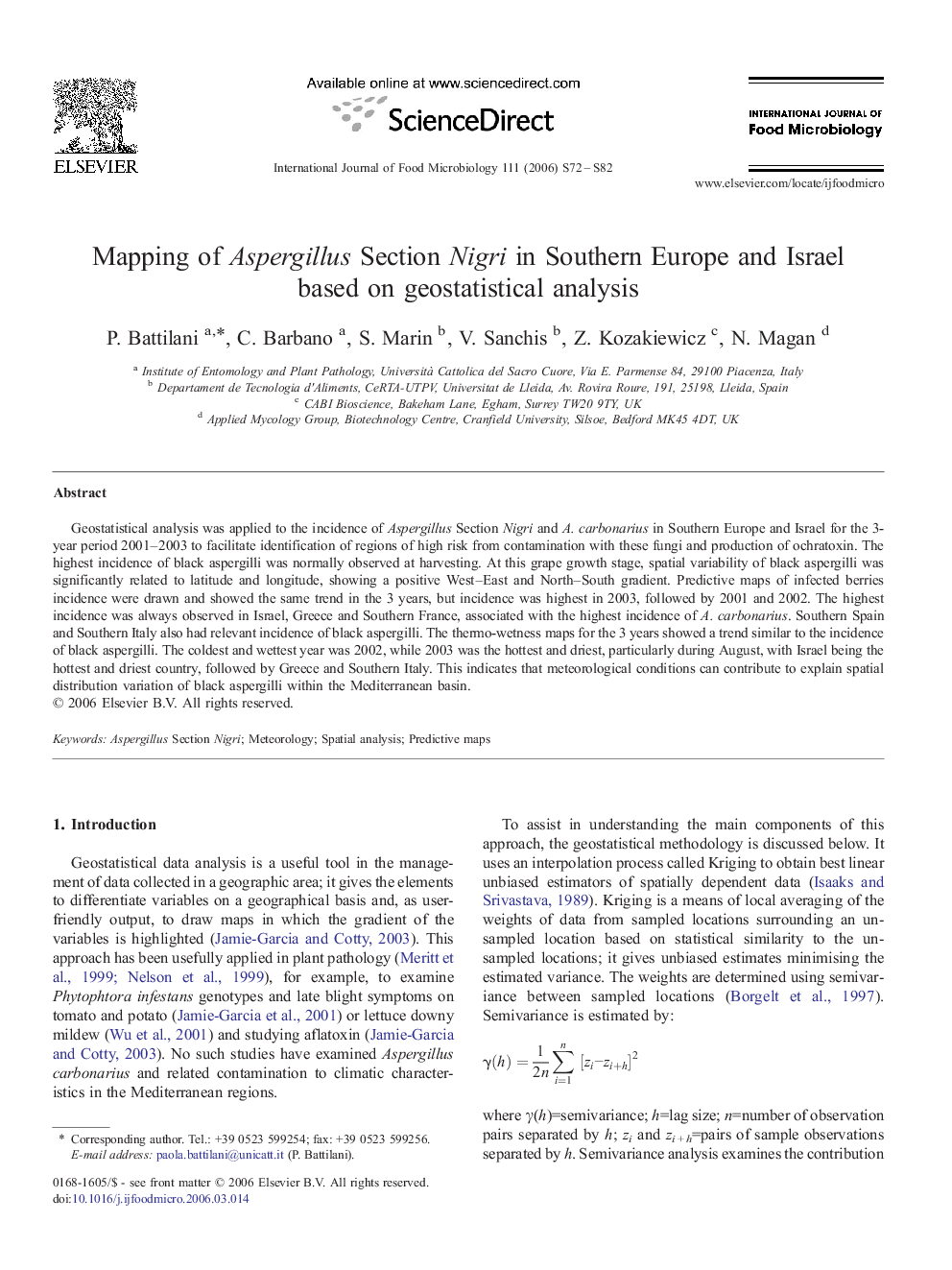| Article ID | Journal | Published Year | Pages | File Type |
|---|---|---|---|---|
| 4370260 | International Journal of Food Microbiology | 2006 | 11 Pages |
Geostatistical analysis was applied to the incidence of Aspergillus Section Nigri and A. carbonarius in Southern Europe and Israel for the 3-year period 2001–2003 to facilitate identification of regions of high risk from contamination with these fungi and production of ochratoxin. The highest incidence of black aspergilli was normally observed at harvesting. At this grape growth stage, spatial variability of black aspergilli was significantly related to latitude and longitude, showing a positive West–East and North–South gradient. Predictive maps of infected berries incidence were drawn and showed the same trend in the 3 years, but incidence was highest in 2003, followed by 2001 and 2002. The highest incidence was always observed in Israel, Greece and Southern France, associated with the highest incidence of A. carbonarius. Southern Spain and Southern Italy also had relevant incidence of black aspergilli. The thermo-wetness maps for the 3 years showed a trend similar to the incidence of black aspergilli. The coldest and wettest year was 2002, while 2003 was the hottest and driest, particularly during August, with Israel being the hottest and driest country, followed by Greece and Southern Italy. This indicates that meteorological conditions can contribute to explain spatial distribution variation of black aspergilli within the Mediterranean basin.
